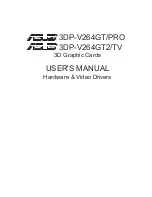
12-3
SECTION 12 –
MISCELLANEOUS
axle is 12,000 lbs., then the load on each rear dual
set (left rear duals or right rear duals) should not
exceed 6,000 lbs.
Tires must be filled to the recommended air
pressure for the highest loaded tire set on that
axle. For example, on the rear axle, if the left side
weighs more than the right, fill the left tires to the
pressure required for that weight, then fill the
right tires to the same pressure as the left ones.
If your actual weight is considerably less than
GAWR, you may be able to lower your tire
pressure. See a tire dealer for a load/pressure
chart.
NOTE: The Hitch Load from a Towed Vehicle or
carrier box must also be counted on the
Rear GAWR and subtracted from the
rear axle cargo capacity.
Be aware that hitch load can affect handling
characteristics. The more weight on the hitch, the
lighter the front end will feel at the steering
wheel.
CAR OR TRAILER TOWING
Hitch Capacity*
5,000 lbs. max.
Tongue Weight*
500 lbs. max.
The factory installed towing hitch on this
coach is capable of pulling 5,000 lbs. load (max.),
however, the vertical (tongue) weight may vary
according to chassis and model combinations
(*see label on hitch). Towing capacity may be
less than hitch rating.
When towing a trailer or vehicle, do not
exceed either the GVWR, the rear axle GAWR,
or the chassis GCWR by the combined loaded
weight of the coach and the towed vehicle.
See
preceding items “Loading the Vehicle” and
“Weighing Your Loaded Vehicle” for
explanation of weight ratings
.
Because of individual vehicle use and loading
habits, we recommend weighing the vehicle
while fully loaded to avoid exceeding any of the
listed Gross Weight Ratings. See “Vehicle
Certification Label” in the Introduction section
for information on gross weight ratings.
Towing will affect vehicle handling,
durability, and fuel economy. Exceeding any of
the listed Gross Weight Ratings will result in
unacceptable overall vehicle performance.
Maximum safety and satisfaction when towing
depends on proper use of correct equipment.
When towing a vehicle behind your
motorhome, the tow bar should be level or
pointing slightly upward towards the tow vehicle.
When coupling the vehicle tow bar to the
Factory Receiver Hitch using a “drop receiver”
or a conventional “ball mount” (commonly
referred to as a “stinger” or a “draw bar”), do not
exceed a 4” drop, nor one that the centerline of
the hitch pin to the centerline of the ball exceeds
8”. See the following Hitch Assembly
illustration.
If a towing “brake system” is required, we
recommend that a “modulated” towed vehicle
braking device be installed. This means that
when the motorhome brakes are applied, whether
hard or soft, a mirror effect occurs in the braking
of the towed vehicle. In other words, the more
force applied to the motorhome brakes, the more
force will be applied to the rear vehicle’s braking
system.
We do not recommend the usage of a “surge-
style” braking device. The usage of a surge brake
(especially when coupled with a hitch ball
located outside our recommended limits) places
excessive stress on the hitch. This abuse of the
ball mount and the hitch may cause premature
hitch assembly failure.
Finally, do not forget to consider the actual
tongue weight. This should not exceed the stated
hitch vertical load for your vehicle. This weight
is typically defined as the tongue weight of a
towed vehicle hitch, boat trailer tongue weight,
or a receiver-mounted carrier rack.
Check state regulations on trailer weight and
trailer brake requirements to be sure you select
the right equipment before towing.










































